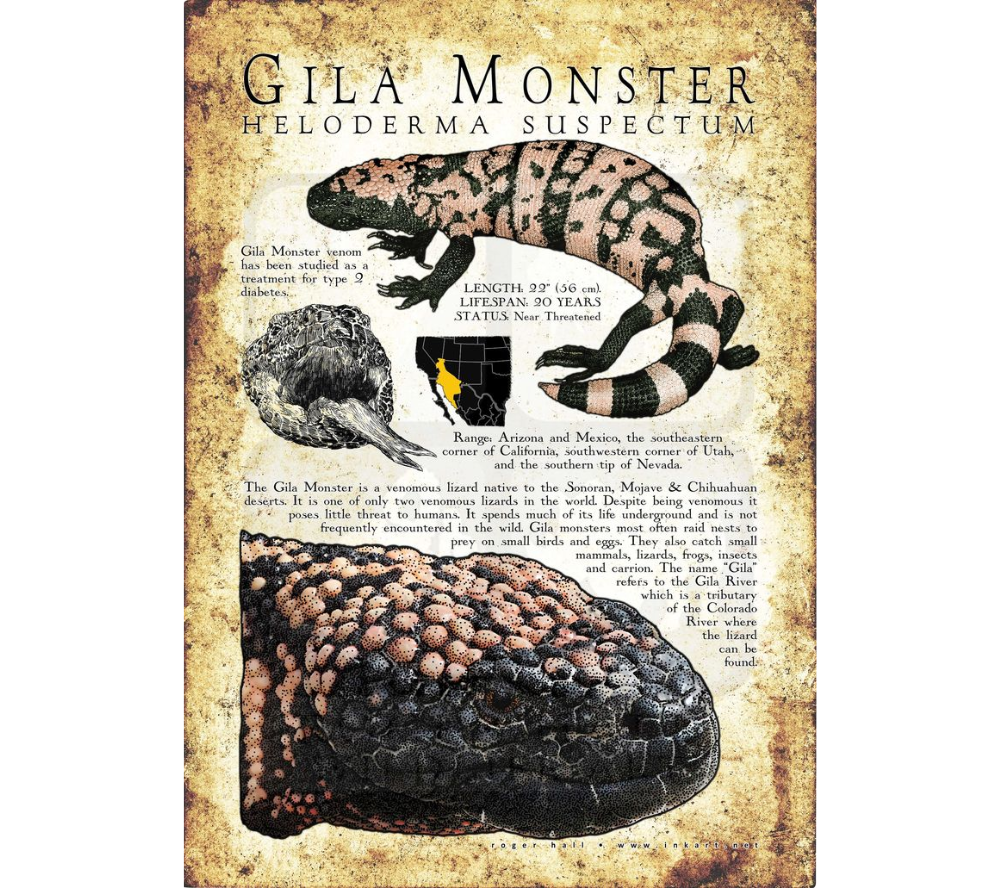
Image Content Description:
This image presents an informational profile of the Gila Monster (Heloderma suspectum), a venomous lizard native to the southwestern United States and Mexico. The content includes scientific facts, conservation status, habitat range, and ecological role, though some formatting and numerical details need correction.
Key Details About the Gila Monster:
1. Scientific & Common Name
-
Scientific Name: Heloderma suspectum (correctly listed).
-
Common Name: Gila Monster (named after the Gila River Basin in Arizona).
2. Physical Traits
-
Length: Listed as “92° (5G cm)” – likely a typo; actual range is 20–24 inches (50–60 cm).
-
Weight: Not mentioned; typical adults weigh 1–2 lbs (0.5–1 kg).
-
Venom: One of only two venomous lizards worldwide (the other is the Mexican Beaded Lizard).
3. Lifespan & Conservation
-
Lifespan: Listed as “90 YEARS” – incorrect; actual lifespan is 20–30 years in the wild.
-
Conservation Status: “Near, Threatened” – should be “Near Threatened” (per IUCN Red List).
4. Habitat & Range
-
Native Regions:
-
U.S.: Arizona, southeastern California, southern Nevada, southwestern Utah.
-
Mexico: Sonoran, Mojave, and Chihuahuan deserts.
-
-
Behavior:
-
Primarily fossorial (burrowing); spends 90% of its life underground.
-
Rarely encountered; most active during spring and early summer.
-
5. Diet & Ecological Role
-
Prey: Birds, eggs, small mammals, lizards, frogs, insects, and carrion.
-
Hunting Method: Uses venom to immobilize prey but is not aggressive toward humans.
6. Medical Significance
-
Venom Research: Studied for potential type 2 diabetes treatments (contains exendin-4, a compound that regulates blood sugar).
Errors & Corrections:
-
Length: “92° (5G cm)” → 20–24 in (50–60 cm).
-
Lifespan: “90 YEARS” → 20–30 years.
-
Conservation Status: “Near, Threatened” → “Near Threatened”.
Notable Features:
-
Cultural Significance: The Gila Monster’s striking black-and-orange patterned skin warns predators of its venom.
-
Low Threat to Humans: Bites are rare and non-fatal (but painful).
Purpose of the Image:
-
Educational: Highlights the Gila Monster’s unique biology and conservation needs.
-
Scientific Outreach: Mentions medical applications of venom.
-
Wildlife Awareness: Dispels myths about its danger to humans.
